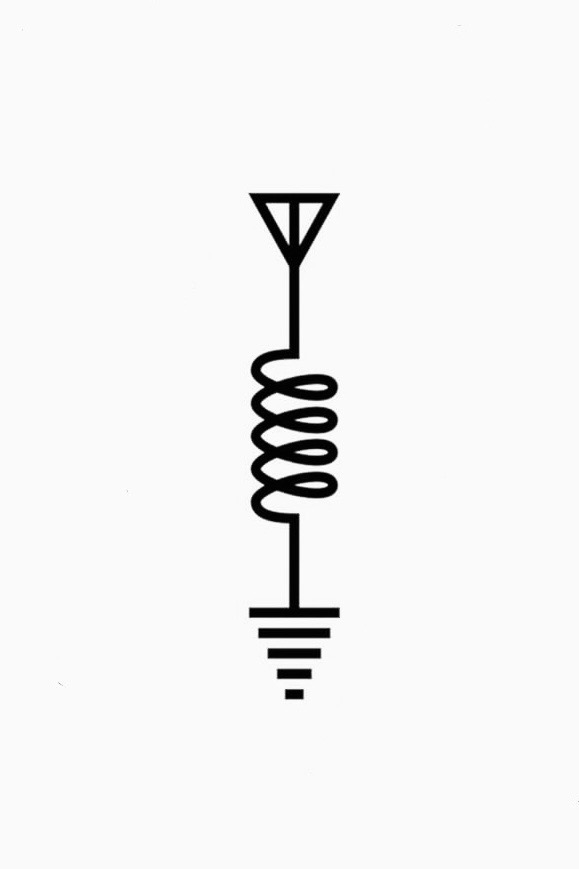Secondarily, should the fan be outside or inside the window?
Asking for a friend. (Me, help. I can’t remember physics, it’s too goddamn hot)
Edit: I’ve opened all the windows and set up a fan a short distance from the window pointing out and it’s reduced the temperature to near-tolerable levels. Unfortunately, venting through the attic was a no-go but moving things aside might make it an option next time. Thank you all, I appreciate the help!
https://www.youtube.com/watch?v=1L2ef1CP-yw This is the best way to get what you want.
I’m glad to see someone linked to this video. No one ever believes me when I tell them this is the way.
This is the way.
I don’t believe @mwproductions.
This guy seems to have a different goal then OP. He just wants the max airspeed in other parts of the house
The goal is the same.
Scenario: cold air outside, hot air inside.
Goal: replace hot air inside with cold air outside.
Method: open one intake window and one exhaust window. Use a fan to blow hot air out the exhaust window while the low pressure vacuumed created inside will cause cold air to be sucked in through the intake window.
Maximize efficiency of method: follow video posted.
Thx
Well, the folks over at noctua have fan shenanigans down to a fine science, and since I have generally forgotten the last rabbit hole I went down, I’d say get two fans and have one blowing in and the other out, lol.
This is the wrong application, noctua are looking for static pressure, what OP wants is to maximise airflow. Mathias wandel has some pertinent videos on the subject, the ideal is a large fan about a metre or two away from the window, depending on the size of the fan, blowing hot air outside.
Why so far from the window?
I think you get the benefit of the airflow pulling in air along its edge to push out with it.
Like pushing a bunch of water with a broom removes not only the water in front of the broom but also more water due to surface tension and inertia
It’s called the venturi effect.
It’s called the linguini effect.
Ohhhhhh the bernoulli effect?
no no, it’s the Magnum effect.
Good ole vermicelli effect
In this case it’s called the brunelli effect
Ah yeah, the Dom Mazetti effect
Its called the Chimichurri effect
The Bozzetto effect?
It’s called the kimchi effect
It’s called the butterfly effect.
Oh yeah the bruscietta effect
It creates an effect where surrounding air is pulled with the stream due to the Bernoulli effect. It’s the same thing that pulls shower curtains in when you shower. If the fan is a bit inside the window, surrounding indoor air gets pulled into the stream, moving more air out in total.
Most of the replies are correct overall. But Mattias Wandel had identified another important factor. Fans don’t just “stuck from the back” and blow out the front. They sort of suck from everywhere including the edges. This means that if you’re putting a fan right up against the window blowing in you’re sucking some room air as well. If you’re putting the fan right up against the window blowing out, some of the air you’re blowing out comes from outside in the first place.
The ideal is then to blow out from 2-5ft away. This way all the air that’s blown is room air, and it’s all blown out. The venturi effect plays a small part. The Bernoulli effect? Equations? Explains why the air stays in a “tube” for a few feet away from the fan. Technically also explains the venturi effect… Everything is Bernoulli…
This was a wonderful comment to read and video to watch, thank you
A fan creates kinda long “channel” in front of it and behind it, where the air is moving rather fast (at the speed that the fan creates). Imagine the narrow beam of light from a flashlight. You want that channel to go right through the window to have a good amount of air flowing.
I don’t know that you need to keep a distance from the window. I think 1-2m is just more practical than having the fan right inside the window frame.
do you happen to know whether this is significantly different for a blower-style fan that has its air intake on one side? for example
I don’t know the type, so I am judging it from that picture.
It shows a rather small area where the air comes out. I imagine that it creates high speed, but the “channel” would have the exact same size and shape as that small area where the air comes out. So I’d consider it as less effective.
A fan with a large diameter could probably move more air.
No, it should be roughly the same.
The thing you’re trying to take advantage of when placing a fan a meter or two from a window is that when you have a moving mass of air and it passes by static air, it “drags” the static air with it. As a result you move more air mass that what was blown by the fan directly out of the fan blades.
A blower fan still blows air in a direction, and can likely take an even bigger advantage than a traditional box fan since a blower fan’s output direction will be more orderly aka closer to a laminar flow than a box fan. But the real advantage of the blower style fan is that its enclosure allows you to direct both the intake and exhaust portions of the air being moved.
Same reason why blowing on your hand close to your mouth is warm, but farther away is cool.
Can you explain that? With one fan pushing air in, and one fan pushing air out, you should be achieving higher airflow than you would with a single fan pushing air either in or out. Especially if you only have the one window open. I know that when I open windows on both sides of my house, I get better airflow than if I have windows on only one side open.
I’ve tried it many ways. The most efficient method using a fan is to open the windows in a room on the leeward side of the house, then place a fan a few feet in front of the doorway, blowing air into the room. It’s more efficient because the impelled air will entrain surrounding air moving a greater volume through the doorway and out all the windows in that room. Then open windows in the farthest rooms to get a cross breeze.
Also look into an attic fan. They exhaust hot air from the attic, and it makes a world of difference in keeping your interior cool. Another trick is to mount shade cloth 6 inches away from the sunny walls of your home. It absorbs most of the solar radiation and keeps your walls cooler.
Exhaust air out from the ceiling if possible.
if you have one and only one opening into your room, id believe setting the fan to exhale is optimal, as the logic would be similar to radial fans in low airflow situations, where in that situation, its ideal to move hot air out.
if you have 2 windows, I think it was one intake. if you have a window and a door (to the rest if the house), placement depends if youre okay with dunping heat into the other part of the house or not.
theres a lot of factors though, as it pertains to the rooms internal pressure and the condition of the air/sunlight outside of the window, as well as how high the window is
The most efficient way is to force cold air into the space while also forcing hot air out. The best way to do this is to have maximum airflow from one end of the house to the other, often by opening all of your windows and using multiple fans to direct the air. For example, an intake fan pulling air in at the north end and an exhaust fan pushing it out at the south end.
Have an fan pushing out on the ceiling in the middle of the house would work good, it will get the hottest air out. But also keep in mind: the air has to come from somewhere, if the house is sealed (new windows) this will not work well.
Ok, so I may be way off here, but it seems to me the better of the two orientations would be to blow air out, allowing the cool air in.
As the air inside the house heats up, it will rise toward the ceiling. The fan will pull that hot air down and out the window, causing cool air to come in to replace the hot air being drawn out. And because cool air stays low to the ground, it’ll create a convection of airflow.
We put ours in the ceiling between the attic and the top floor. Pull the air out of the house, open the windows at night. I’ve heard it called a “whole house fan”. I would occasionally turn it on with the windows closed while the air conditioning was running to, uh, make it go faster, but I’m not sure you’re supposed to do that. Cooled the place down in seconds tho.
What are you trying to get someone diviorced?
The key to happiness in life is to know what questions can’t be answered and then to not ask them.
I’m not a physicist. But I did live in an apartment at university, and shortness of funds plus hot weather meant experimenting with various box fan configurations.
What I found most optimal was to open two windows on opposite sides of the dwelling, with the one box fan aimed outward, using cardboard to block the openings around the fan. In my case, the choice of egress (ie air flowing out) window was based on: the window which best fit the box fan’s shape, proximity of noise to the bedroom, and the quality of the window screen.
As for why the fan points outward, this sends the heat of the motor (60-100 W) out of the dwelling, rather than drawing it in. Also, if facing inward, the high airflow at the tips of the fan blades would tend to draw small flies into the dwelling. But if the fan is at the egress window, then the ingress airflow will average out over the full surface area of the ingress window, producing a lower peak airflow rate, akin to a gentle breeze.
If you have a multi-floor unit or house, it would be optimal to place the fan at the highest egress window, to take advantage of heat naturally rising. Opening multiple ingress windows will quickly cool those rooms, while also reducing the peak ingress airflow and resulting drafts (eg blowing papers off tables). Of course, it’s necessary to open all the doors to form a path between the ingress and egress windows.
- reversible fan
- blow hot air out during the day
- bring cool air in a night (night flushing)
Any box fan is reversible if you turn it around.
Who are you who is so wise in the ways of science?
The make up air is coming from outside. The fan direction doesn’t matter.
- reversible fan
It depends on the windows placements that are open and temperature of the building sides vs the location which can be time of day dependent. It is not always good to open all windows as it can be valuable to create an airflow that does what you want. Air pressure goes down as you go up in height so its good to have windows open lower on the cooler side and higher on the higher side. Its possible the whole heat risese effect helps this to im not sure. This should create its own airflow that is slight compared to a fan but very consistent and can help a lot on its own. From there I do think pulling out seems to work better than pushing in but it is way better if it covers the whole opening as much as possible. So like if you can use foam insulation to make a form fitting collar for the fan that sizes it to sit in the center of the window opening hole and seals it to the edges. That will work better.


No, but they can drive a geothermal heat pump. Just saying.
Happy to hear you solved it for now. For a more long-term solution, consider investing in an air conditioner. And make sure it also has a heating mode (a.k.a a heat pump), it should cost pretty much the same and is the most efficient way to heat a home in winter.













